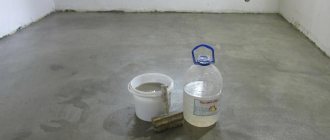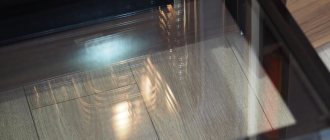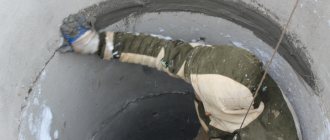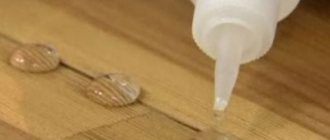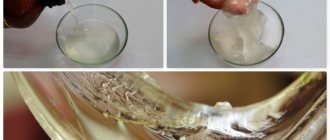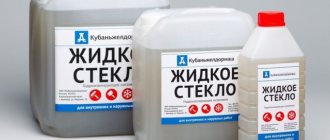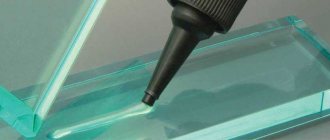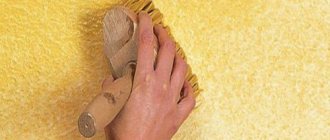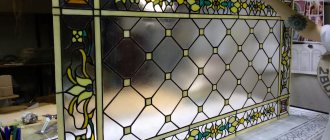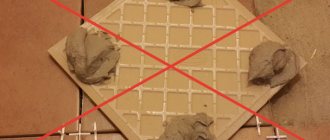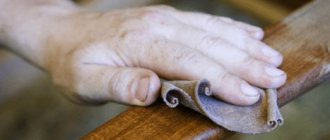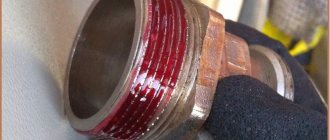Material characteristics
What is liquid glass? In scientific terms, this is a solution of sodium silicate and potassium silicate, that is, the building material in question contains the same components as ordinary glass. Another name for this material is silicate glue, which makes its use immediately clear.
Liquid glass has very high adhesive properties and is characterized by thermal conductivity - this material is often used in thermal insulation work. The insulation, in the manufacturing process of which liquid glass was used, can withstand temperatures of up to 1200 degrees Celsius!
Characteristics of liquid glass
The second name of the substance is silicate glue. It is an aqueous solution of sodium or potassium silicates. During electrode coating, this composition is replaced by lithium silicates. The material was first obtained back in the 19th century. Now there are several ways to manufacture a product industrially. Its parameters depend on the ratio of components that do not affect quality. However, for some applications, a certain composition is preferred.
Liquid glass, which has an alkaline reaction, dissolves in water. Acidity ranges from 10 to 13. The saturation and consistency of the composition is determined by its concentration, temperature and ratio of elements. Sodium-based material turns into a liquid state at temperatures above 600 degrees. The thickened film of sodium silicate can be dissolved by water, and under the influence of humidity and carbon dioxide contained in the air, it loses its properties.
Thanks to its waterproofing, thermal insulation and fire retardant properties, the product is used in numerous areas:
- production of building materials resistant to acids and water;
- special impregnation of fabric surfaces;
- production of fire-resistant paint;
- strengthening loose soils.
Silicate glue is used to glue cellulose materials. It is used in the production of electrodes and in the drilling process.
Important! According to the instructions, the product is incompatible with organic substances, except sugars, alcohol and urea.
Application of liquid glass
Liquid glass has found application in various fields of human activity, so it is impossible to quickly and compactly list all the aspects of its application. But there are areas that definitely need to be mentioned:
Liquid glass is used for waterproofing. Both the walls and the foundation are impregnated with this material - liquid glass turns such surfaces into ones that are not susceptible to moisture and changes in air temperature. It is advisable to use this material when insulating the walls of a house from the inside. Liquid glass is an excellent antiseptic.
You can often see fungus and mold on the walls and ceilings of residential premises, and indeed on various surfaces in general - these are the consequences of exposure to moisture. To get rid of this unpleasant and harmful phenomenon to human health, you need to use various means to destroy fungal colonies. If you treat a surface already damaged by mold/fungus with liquid glass, they will simply disappear.
For this purpose, liquid glass is used to prepare walls for wallpapering. Liquid glass has excellent adhesion. This means that it adheres perfectly to any surface. Using this material, you can glue completely different materials - from cardboard to porcelain. Liquid glass significantly increases the moisture resistance and fire safety of wood, paper and ceramics - they are specially coated with this product.
If we consider liquid glass exclusively from the construction side, then many mixtures can be made with this material. The material has found application in the following processes:
Primer with liquid glass.
Used for surface treatment before painting or wallpapering. Naturally, the option under consideration cannot be used in its pure form - it is simply mixed with cement in the following proportion: the same amount of liquid glass is taken for 10 kg of cement. First you need to mix cement with water, and then the resulting solution is poured into liquid glass. A solution for waterproofing work.
It is necessary to mix cement, sand and the material in question in equal proportions. The resulting mixture can be used for waterproofing work of any complexity. Fireproof solution. First, a cement-sand mixture is prepared - for 1 part of cement, take 3 parts of sifted sand.
Then a little liquid glass is added to the resulting mixture (about 20% of the total volume of the dry mixture). Use fireproof mortar with liquid glass for laying fireplaces and stoves. Protective agent against fungus and mold. It is necessary to dilute the material in question in water (proportions 1:1).
The resulting solution is used as an antiseptic for treating wooden, stone, plastered and other surfaces. Impregnation for processing materials during preparatory work. You will need to dilute 400 g of liquid glass in a liter of water and lubricate the surface two or three times. But keep in mind: each layer must be completely dry and only then can you begin to apply the next layer.
What is liquid glass?
This substance is a solution of water and silicate salts. There are several varieties of this solution:
- Sodium-based liquid glass. It has properties such as fire resistance, protection from moisture and water, more adhesive, and disinfects.
- Potassium based. Insensitive to weather and acid influences.
Sodium-based liquid glass is mainly used on cement surfaces to help it harden faster.
Liquid glass is chosen because of its properties:
- Water repellent. Use on surfaces that will be in constant contact with liquid for longer service life.
- Protective. Apply to avoid infection by fungus and mold.
- Fire protection. If you treat the surfaces of the room with liquid glass, then possible fires will be reduced to a minimum.
- Electrical protection. Liquid glass does not transmit electricity.
- Acid resistance. Due to the fact that liquid glass contains an admixture of silicate, the surface becomes impervious to chemicals.
- Safety. This substance is completely safe for humans, as it does not emit any toxic substances.
Liquid glass and concrete
Liquid glass for concrete is an improvement in the quality characteristics of the latter material. It is recommended to add this option to concrete for those structures that will be constantly exposed to moisture - this technique will extend the life of the concrete product and prevent its destruction. Do not forget that liquid glass has antiseptic properties and, when added to concrete, it makes the latter resistant to the harmful effects of fungus and mold.
Important: liquid glass hardens very quickly (almost instantly), so experienced builders suggest not adding it to the concrete solution, but impregnating ready-made structures.
If a concrete structure is intended for painting, then liquid glass cannot be used to improve the qualities of the base material. When dried, the material in question forms a thin protective film on the surface of any object/product - it will be impossible to apply the finishing material.
Advantages and disadvantages of liquid glass
The most important advantage of liquid glass is its durability; after applying this substance to the surface, it will be protected for quite a long time. In addition, the price is not high, so you don’t have to worry about high costs when processing the room. The surface treated with liquid glass becomes even stronger.
The only disadvantage of liquid glass is that after application you will not be able to paint over it. The surface will be covered with a special film, which will make it impossible to apply paint.
Application of liquid glass outside construction
Liquid glass is used for waterproofing, improving the quality characteristics of complex/heavy materials and is considered indispensable in the construction industry. But this unique material has found its application in other areas:
- for laying linoleum, PVC tiles; for making putties intended for metal pipes; for impregnating fabrics and other materials in order to reduce the fire hazard; for grafting trees - liquid glass is used to treat the wound surface on a tree trunk; for polishing - liquid glass makes almost any surface absolutely smooth and shiny.
The use of liquid glass improves the quality characteristics of many materials, provides waterproofing, thermal insulation, and automatically carries out antiseptic work.
( 100 votes, average: 4.62 out of 5)Loading…
With the advent of a protective coating based on liquid glass on the construction market, consumers immediately appreciated its unique capabilities. Currently, this composition has a fairly wide scope of use. How is processing done using liquid glass and what is it?
What is the material
Silicate glue or, as it is otherwise called, liquid glass is an aqueous solution of silicate salts. Depending on the main component there are:
- sodium liquid glass, characterized by a high degree of adhesiveness, fire resistance, antiseptic and waterproofing properties; potassium glass, which is immune to atmospheric influences and acid attack.
Soda glass is used to accelerate the hardening process of cement mixtures due to the chemical reaction that occurs.
Liquid glass has become widespread as a construction and finishing material due to its properties:
Hydrophobic (water-repellent). Thanks to this property, liquid glass is used to treat surfaces exposed to prolonged contact with liquid, including wood products.
As a result of impregnation, they will not be subject to swelling and deformation. Antiseptic. This property allows the use of silicate glue for protective impregnation of walls against such negative manifestations as mold and mildew. Fireproof. When floors and walls are impregnated with liquid glass, the fire safety of the room increases. Antistatic.
The material eliminates electrification and does not provoke the occurrence of static electricity. Acid-resistant. Impregnation with a silicate solution allows you to protect the surface from the effects of chemicals. Eco-friendly. This material does not emit substances harmful to the human body.
Liquid glass
What it is
This is what uncured material looks like
- First, you should still figure out what liquid glass is or, as it is also called, silicate glue, although its composition does not change at all depending on the name. This can be sodium silicate Na2O(SiO2)n (aqueous alkaline solution) and/or the same potassium solution K2O(SiO2)n. Sometimes (to coat electrodes) lithium silicate can be used in this capacity.
- The resulting component dissolves in water and has an alkaline reaction, and depending on the concentration, its pH value varies from 10-13. The finished solution may have different viscosity and density of the composition, but this directly depends on its temperature, concentration and the ratio of alkalis to silicic acid. At a temperature of 590-670⁰C, the product begins to liquefy.
- The instructions indicate that Na2O(SiO2)n and K2O(SiO2)n cannot be combined with organic substances, with the exception of urea, sugar and alcohol. Since 2008, even polishes have been produced based on it.
- Na2O(SiO2)n and K2O(SiO2)n are widely used in construction due to its waterproofing, thermal insulation and fire retardant properties.
Note. If liquid glass dries on the surface of an ordinary glass, then as a result it becomes irreversibly matte, which cannot be corrected in any way.
Wood processing
Terrace treatment
Please note that impregnation of wood with liquid glass is not impregnation in the full sense of the word, since there is a film on the surface of the lumber that cannot be coated with paints and varnishes. That is, you can apply them, but you will never be able to obtain the desired quality of finish, therefore, there is simply no point in this - it is better to do this before - for example, cover the boards with stain, and after that apply a layer of liquid glass.
But in most cases, such compositions for wood are used in those places that are not frontal - these can be elements of various frames, piles and similar engineering structures.
But when using liquid glass to process wood, you will not be able to protect it from constant exposure to running water - only temporary protection is possible here, that is, such eliminated activations include precipitation or moisture, which can be in basements or on foundations.
Na2O(SiO2)n and K2O(SiO2)n can be used as a waterproofing and antiseptic, that is, on the treated surface and inside the lumber there will be no favorable environment for the life of microorganisms that destroy wood (various types of fungal mold, shashel, bark beetle, and so on).
As you can see, here it is possible to prevent a variety of wood pests, and this is achieved thanks to the frozen film on the surface - simply the organisms that feed on the wood do not perceive it as such, therefore, no damage occurs.
Board processing
As we mentioned above, liquid glass can be used as a fire retardant (fire retardant), which not only withstands high temperatures, but simply, due to various interactions, prevents fire from spreading.
As you know, such material forms a dense film that clogs the pores of the lumber (top layer), making oxygen access impossible, and the combustion process itself without oxygen is impossible even in theory.
We recommend: Furniture wax: a DIY recipe for making the product
But do not forget that we cannot talk about 100% fire protection here - the frozen layer only makes the material difficult to ignite, but this property can only be maintained for 15-30 minutes, after which this silicate glue begins to drain (at a temperature of 590- 670⁰C).
Fire retardant PVK-2002
Fire retardants based on liquid glass also contain ammonium chloride and ammonium or boron phosphate and various synergists and stabilizers that increase the quality capabilities of such a fire retardant.
As we have already mentioned, compositions of this kind are not impregnations in the full sense of the word and a protective film always remains on top of the processed material, which prevents further finishing in the form of painting work using paints and varnishes.
Therefore, fire retardants with a layer remaining on the surface of the processed material are used in attics, warehouses, production shops and in other rooms where decorative work is not given special importance.
Manufacturing Basics
In the photo: production of liquid glass at the enterprise
Both the composition and the price of liquid glass will primarily depend on the method of its manufacture or the materials that will be used for this. The simplest method by which this substance is obtained is to use a mixture made from an alkaline solution with siliceous raw materials, while observing temperature and pressure indicators. The temperature indicator, as a rule, should be identical to the boiling value of the alkaline solution.
The consumption of the resulting composition directly depends on the texture of the surface being treated - the smoother it is, the less liquid glass is required to cover it and vice versa. But the time it takes for such a mixed component to harden will depend on whether there are any additives (most of them are in fire retardants) or whether the material will be used in its pure form. Thus, the final drying time can vary from 10 minutes to 12 hours.
Liquid glass as an adhesive
It should be said that liquid glass can be made with your own hands at home, but for this you cannot do without an autoclave and certain materials. So, you will need to find a raw material that contains silicon, as well as a concentrated solution of sodium hydroxide.
You will need to place the lye solution and silica raw material into the autoclave, while setting the temperature at which the lye solution boils.
Note. Of course, no one guarantees you a high-quality product at home, but what you get at the end is excellent for waterproofing a foundation, cellar or basement.
Using waterproofing for foundations
The underground part of the building - the foundation - is most susceptible to the destructive effects of moisture, and it is this part that most needs protection, despite the fact that it serves as the basis for the entire architectural composition. Therefore, here the use of silicate adhesive for waterproofing is even more than appropriate.
Using waterproofing for swimming pools
If you coat concrete with liquid glass, this greatly increases its water dispersion, therefore, it is very profitable and convenient to use for waterproofing decorative and swimming pools.
Application for waterproofing
Due to its chemical composition, liquid glass does an excellent job of filling porous materials:
- brick; concrete; plaster; wood.
When the surface is treated with a silicate composition, its hydrophobicity and strength increase. Therefore, liquid glass has become particularly widespread in the processing of foundations, walls and floors of basements, wells and swimming pools. To produce a primer with hydrophobic properties, it is necessary to combine water, cement and ironclad in equal proportions.
The surface to be treated must first be prepared: leveled and cleaned of dirt.
When processing wood, it is desirable to preserve its natural unevenness (this will ensure better adhesion of materials). If you had to wet the surface during cleaning, then it must be allowed to dry before processing. The thickness of the waterproofing mortar layer must be at least 3 mm.
Silicate solution is also used when covering floors in a bathhouse or bathroom. To create a hydrophilic coating of a large area, for example, to cover a floor or walls, you can use a spray gun, roller or brush.
Application to increase the fire resistance of materials
The fire resistance of liquid glass allows it to be used for:
- masonry of fireplaces, chimneys and stoves; production of heat-resistant concrete and cement, as well as fire-resistant paints and varnishes; impregnation of wood to give it fire-retardant properties; coating of elements of metal structures.
To prepare a fireproof silicate mortar, 3 parts sand, 1 part cement and 1 part liquid glass are required. Such a mixture quickly hardens as a result of the chemical reaction that occurs, so you can first make the necessary structure from ordinary mortar, and then apply an external coating of the concrete with a fire-resistant layer.
To give the surface fire-resistant properties, you can coat wood or concrete only with liquid glass from a spray gun, using it as a primer. Walls can also be impregnated either with a separate solution of silicates or in the form of a cement screed for the floor.
Liquid glass processing of different coatings
Paint guru➣Special materials➣Other coatings➣
With the advent of a protective coating based on liquid glass on the construction market, consumers immediately appreciated its unique capabilities. Currently, this composition has a fairly wide scope of use. How is processing done using liquid glass and what is it?
What is the material
Silicate glue or, as it is otherwise called, liquid glass is an aqueous solution of silicate salts. Depending on the main component there are:
- sodium liquid glass, characterized by a high degree of adhesiveness, fire resistance, antiseptic and waterproofing properties;
- potassium, which is immune to atmospheric influences and acid attack.
Soda glass is used to accelerate the hardening process of cement mixtures due to the chemical reaction that occurs.
Liquid glass has become widespread as a construction and finishing material due to its properties:
- Hydrophobic (water-repellent). Thanks to this property, liquid glass is used to treat surfaces exposed to prolonged contact with liquid, including wood products. As a result of impregnation, they will not be subject to swelling and deformation.
- Antiseptic. This property allows the use of silicate glue for protective impregnation of walls against such negative manifestations as mold and mildew.
- Fireproof. Impregnating floors and walls with liquid glass increases the fire safety of the room.
- Antistatic. The material eliminates electrification and does not provoke the occurrence of static electricity.
- Acid-resistant. Impregnation with a silicate solution helps protect the surface from exposure to chemicals.
- Eco-friendly. This material does not emit substances harmful to the human body.
Application for waterproofing
Due to its chemical composition, liquid glass does an excellent job of filling porous materials:
- bricks;
- concrete;
- plasters;
- wood.
When the surface is treated with a silicate composition, its hydrophobicity and strength increase. Therefore, liquid glass has become particularly widespread in the processing of foundations, walls and floors of basements, wells and swimming pools. To produce a primer with hydrophobic properties, it is necessary to combine water, cement and ironclad in equal proportions.
The surface to be treated must first be prepared: leveled and cleaned of dirt. When processing wood, it is desirable to preserve its natural unevenness (this will ensure better adhesion of materials). If you had to wet the surface during cleaning, then it must be allowed to dry before processing. The thickness of the waterproofing mortar layer must be at least 3 mm.
Silicate solution is also used when covering floors in a bathhouse or bathroom. To create a hydrophilic coating of a large area, for example, to cover a floor or walls, you can use a spray gun, roller or brush.
Application to increase the fire resistance of materials
The fire resistance of liquid glass allows it to be used for:
- masonry of fireplaces, chimneys and stoves;
- production of heat-resistant concrete and cement, as well as fire-resistant paints and varnishes;
- impregnation of wood to give it fire-retardant properties;
- covering elements of metal structures.
To prepare a fireproof silicate mortar, 3 parts sand, 1 part cement and 1 part liquid glass are required. Such a mixture quickly hardens as a result of the chemical reaction that occurs, so you can first make the necessary structure from ordinary mortar, and then apply an external coating of the concrete with a fire-resistant layer.
To give the surface fire-resistant properties, you can coat wood or concrete only with liquid glass from a spray gun, using it as a primer. Walls can also be impregnated either with a separate solution of silicates or in the form of a cement screed for the floor.
Pouring the flooring
In bathrooms, showers, bath rooms and indoor swimming pools, which are characterized by constant humidity and wet floors, flooring can be made using liquid glass. To fill the floor you need:
- if wooden floors are laid, then first make a concrete screed;
- pour the silicate solution onto the dry surface in equal portions;
- level the glue layer with a wide spatula;
- carry out final leveling of the layer with a thickness of 3-5 mm using a squeegee;
- After the silicate layer has dried, apply a finishing varnish (polyurethane or epoxy is better).
It is worth considering that it is impossible to decorate a floor already covered with liquid glass. When pouring a concrete screed, the floor surface will have a corresponding “concrete” color and texture. Decorating the floor must be done before applying a layer of liquid glass. Alternatively, you can paint the concrete. At the same time, it is recommended to add a small amount of silicate to paints and varnishes to improve their adhesion to concrete. After the paint has dried, you can fill the floor according to the above algorithm.
By the way, taking into account the non-toxicity of the material, its heat and water resistance, it can be used to treat a steam room, which is most often made of wood and can be subject to deformation with constant exposure to moist hot air without proper care.
Other uses
Liquid glass is also used for many other purposes:
- Silicate glue is widely used as an antiseptic primer for impregnating walls against mold and mildew.
- This material is also useful when laying PVC or linoleum tiles. In this case, the silicate solution will act as glue.
- The high adhesive properties of liquid glass make it possible to use it when sealing or connecting pipes, and caulking joints. In this case, the parts can no longer be disassembled, and if it is necessary to replace one of the elements, the structure will have to be completely dismantled.
- This solution can also be used as an adhesive when repairing furniture made of wood and other materials.
- Gardeners use it to treat trees after pruning. The cut areas become extremely vulnerable to bacteria that spoil the wood. Their putty with liquid glass “seals” the cut and protects the wood from destruction. The car after protective polishing using liquid glass
- This substance can also come to the rescue of housewives: an aqueous solution made in a ratio of 1 to 25 allows you to clean dishes from heavy dirt. To achieve the best effect, it is recommended to boil the dishes in the prepared solution.
- Can be used to remove old paint coatings.
- Silicate solution is even used in agriculture. Experiments have proven that seeds treated with this composition are not susceptible to bacteria and germinate faster.
- Use in wall decoration: when covering walls with glass wallpaper, they are pre-impregnated with liquid glass. This eliminates moisture absorption and increases the wear resistance of glass wallpaper. In some cases, to increase the service life of walls covered with conventional wallpaper and to give them a special shine, a finishing coating is performed with a silicate solution.
- When processing wood products. It is enough to immerse an object made of wood in a container with a silicate solution for some time.
In construction stores, liquid glass is presented in a wide range: both in its pure form and ready-made building materials based on it. Thanks to its low price, this material is available to any consumer, regardless of his income level. The main thing is to choose a composition that is suitable for its characteristics.
Pouring the flooring
In bathrooms, showers, bath rooms and indoor swimming pools, which are characterized by constant humidity and wet floors, flooring can be made using liquid glass. To fill the floor you need:
- if wooden floors are laid, then first make a concrete screed; pour silicate solution onto the dried surface in equal portions; level the adhesive layer with a wide spatula; carry out the final leveling of the 3-5 mm thick layer using a squeegee; after the silicate layer has dried, apply a finishing coat of varnish ( polyurethane or epoxy would be better).
It is worth considering that it is impossible to decorate a floor already covered with liquid glass. When pouring a concrete screed, the floor surface will have a corresponding “concrete” color and texture.
Decorating the floor must be done before applying a layer of liquid glass. Alternatively, you can paint the concrete. At the same time, it is recommended to add a small amount of silicate to paints and varnishes to improve their adhesion to concrete. After the paint has dried, you can fill the floor according to the above algorithm. By the way, taking into account the non-toxicity of the material, its heat and water resistance, it can be used to treat a steam room, which is most often made of wood and can be subjected to constant exposure to moist hot air without proper care deformation.
Characteristics of liquid wallpaper
The main components of liquid wallpaper are natural fibers (silk, cellulose, cotton and other options are used), water-based dye and binder (glue or dispersion).
The imagination of manufacturers allows them to add a wide variety of (natural) ingredients - for example, mica glosses or marble or quartz chips. These additives create special effects of color and play of light.
The application technique is similar to working with plaster, with the exception of minor nuances. It is interesting that abroad “liquid wallpaper” is classified as a type of plaster. Used only for interior decoration, they create a cozy atmosphere and at the same time enhance sound insulation in the premises. Fibers play a significant role in this, as they also improve acoustics.
Besides:
- environmental properties allow their use in children's rooms;
- fire-resistant, moisture-resistant, light- and frost-resistant material, antistatic;
- It’s easy to prepare the wall, since they themselves mask and level out small irregularities and cracks;
- there are no seams, which has a positive effect on the aesthetic appearance;
- in case of further damage to the walls or subsidence of the building, gaps up to 3 mm are closed only due to the plasticity of the material, and large ones can be sealed as they appear, using the remains;
- resistance to heat and sunlight allows you to maintain your appearance for a long time;
- the work technique involves the development of various color design solutions, including the creation of drawings on the walls;
- in order to clean the walls from them, it is enough to wet the wallpaper.
It also has its drawbacks. For kitchens and bathrooms, such wallpaper should be used with caution, since constant humidity and contact of water with the wall can cause damage to the surface.
A solution has been thought out: liquid wallpaper can be opened with a special varnish, after which the water has no destructive effect.
You can use this advice from construction market participants. But once cracks appear inside the wall, it is no longer possible to easily fix the defect from the outside. Perhaps you need to opt for a different type of interior decoration.
